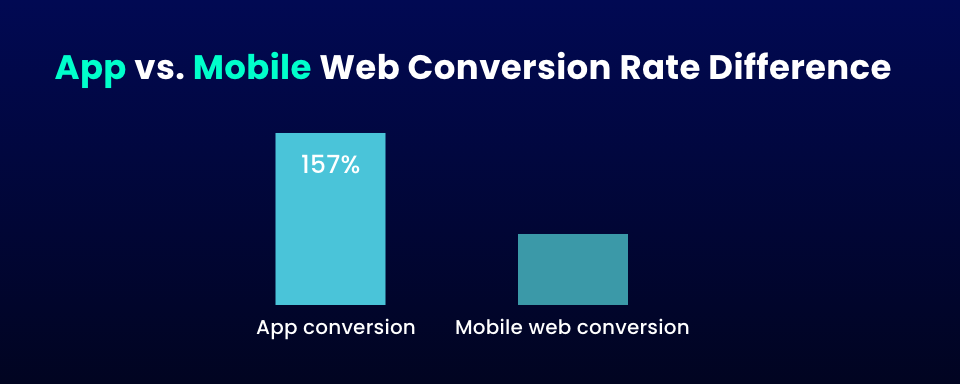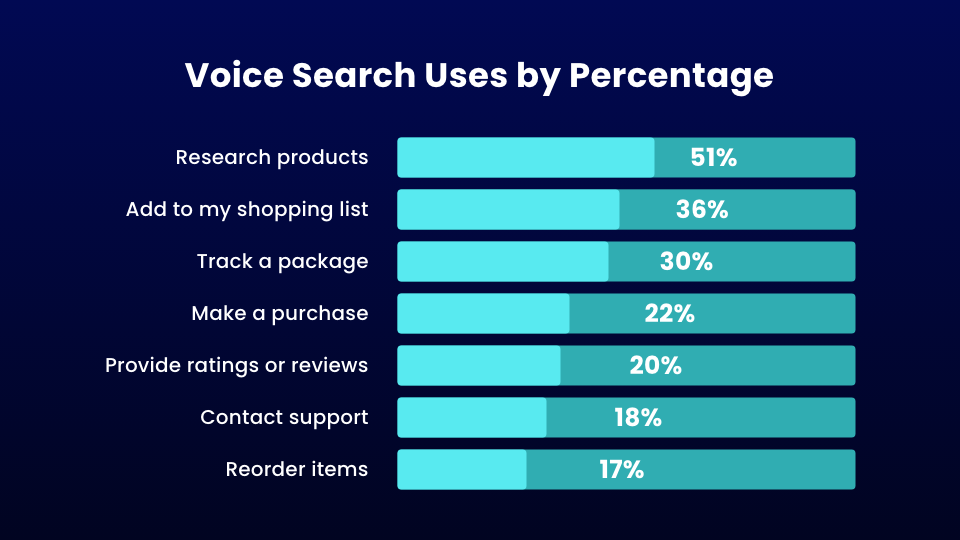Maximum mobile users today prefer to use their mobile where everything from shopping to healthcare lies at their arms reach through an app. This has set the precedent for new mobile trends in retail with swift and seamless shopping.
In the last six months, 79% of mobile users made at least one online purchase using their phones or tablets. Mobile commerce now controls 73% of the global e-commerce market share, up from 59% in 2017.
Mobile Trends in Retail 2023
Increased preference to shopping via mobile apps
It has been quite some time since consumers have started to use their mobile for shopping online. Mobile m-commerce is a thriving sector with almost every retail brand offering the purchase to buy things online.
What is changing is the preference to shop from a mobile app installed in the device instead of a mobile browser based marketplace. Studies show 57% of US retail consumers utilized a mobile app for a product overview.
Furthermore, an overwhelming 85% of consumers exhibit a preference for mobile apps over mobile websites.
Notably, when compared to a mobile web session, a mobile app demonstrates an impressive conversion rate increase of 157%.

One click ordering Speeds up checkout
Placing an order online through a mobile website requires filling in a couple of fields like credit/debit card number, credit/debit card expiry, billing address etc. every time an order is placed. This can irk the customer and lead to cart abandonment. According to a recent study 97% of cart abandonment happens on a desktop site compared to only 20% in case of mobile site.
The secret lies in one-click ordering where mobile apps provision storage of such information under a user account. Once a user proceeds to check out all these necessary details are seamlessly pulled out and autofilled.
Consumers also can enjoy the benefits of integrating a wallet like Apple Pay or Android Pay to checkout which they can also use for brick and mortar stores while shopping in BOPIS mode.
Retail apps will increasingly adopt microservice based architecture instead of monolith. Migration to microservices facilitates faster consumer checkout, scale as traffic increases, adds features to the consumer checkout flow, and improves overall reliability.
Social commerce will gain popularity
Social media platforms have started featuring shoppable post. Users in Facebook or Instagram can directly click on such posts to buy the advertised item without launching another browser or navigating to the product website.
Shoppable posts address the pain points in the conversion process. This feature has created up to 1416% traffic boost and 20% increase in revenue for Instagram handles of various brands.
Retailers will reap the benefits of AI-powered retail technology
We will see more AI influenced solutions for retail processes. Most mobile apps will start integrating some type of AI integrated chatbots. AI will play a significant role in customer segmentation based on that apps will push notification about special offers. Apps will send push notifications to users for real-time offers based on customer segmentation. In a study, 54% of people were okay with using a chatbot instead of human assistance if it saves time.
Voice shopping is another significant addition to retail mobility projected to grow to a $40 billion market in 2023. Using voice shopping to browse through categories of products and placing an order seems very engaging for retail shoppers.
Voice shopping is expected to reach $40 billion in 2023. That’s up from a modest $2 billion in 2018, which is a 1,900% increase in just four years.

VR & AR will enhance customer product overview
VR and AR will significantly influence buyer’s decision in retail. VR can be used for product trial to give exactly the feel of the product.
For example, a business selling furniture can make the customer experience how a particular piece of book rack will fit in a room by scanning the room interior and making a VR projection.
Companies have already launched products with VR try on from apparels to furniture. This is going to be a driving trend for retailers to adopt VR solutions.
Conclusion
The above mobile trend in retail indicates there is an increasing pressure on retail organizations to adopt a mobile app suitable to serve the latest industry trend. Building an app will require a lot of involvement with infrastructure upgrade and training. Small businesses may give a thought about outsourcing the entire app development, integration, and management to save on cost.
